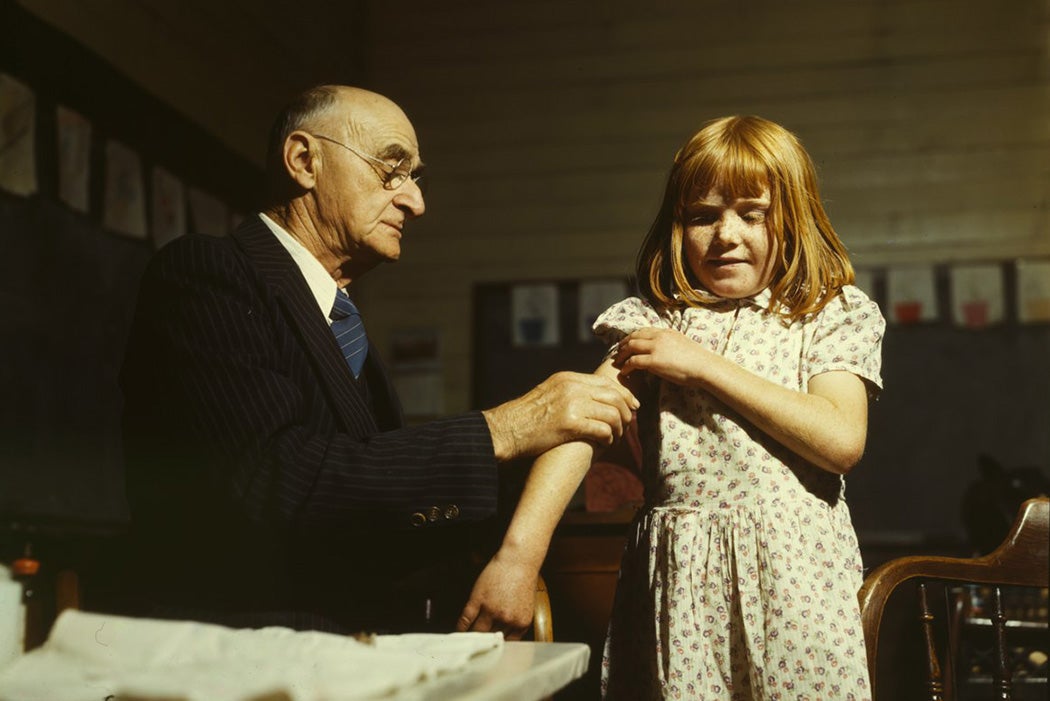What happens when schools become vaccination sites? In the case of influenza, good things, according to a large study led by microbiology researcher Pia S. Pannaraj. The study’s authors found that school-located influenza vaccination (S programs can efficiently immunize large numbers of school-age children, which goes a long way toward protecting the unimmunized and improving school attendance.
As Pannaraj and her coauthors describe their methodology: “Active surveillance for influenza-like illness (ILI) was conducted on 4455 children in 4 SLV intervention and 4 control elementary schools (grades K–6) matched for sociodemographic characteristics during the 2010–2011 influenza season in Los Angeles County, California.”
Influenza viruses love schools. As the authors write, “the high intensity of social contact in schools provides a perfect mode to initiate and amplify the spread of influenza in the community.” School-age children are “the most important vectors for community-wide transmission of influenza,” and children between the ages of five and eighteen experience of 30 percent to 50 percent attack rates—“the highest of any age group.” Kids also shed viruses in “greater quantities and for longer periods than adults.”
Schools therefore seem like a logical place to set up vaccination programs. In this study’s case, these were simple affairs: the school nurse or a mobile health nurse from a nonprofit hospital administered the vaccines. Influenza fact sheets, vaccine information documents, and consent forms were sent to parents in advance of the in-house vaccination opportunities. Follow-up after vaccination included swabbing sick children to see if they were suffering from the flu after all.
The local 2010–2011 flu season was characterized by three major strains of influenza: H1N1, H3N2, and B. Nurses offered children, through their parents or caregivers, trivalent injections or live attenuated influenza vaccine, which is administered via the nose. The authors note that for school-age kids, nasal administration is the easiest method: no “ouchie!” from a shot.
The conclusion points in positive directions for schools as vaccination sites: “School-located vaccination programs can reach more children at lower cost than clinic-based approaches and efficiently reduce the spread of influenza to other school-aged children, family members, and the community.”
Weekly Newsletter
The results of this study show that vaccinating at least a quarter of a school population results in decreased influenza rates. Fewer sick kids also meant improved school attendance. Unvaccinated children “acquired influenza more than 3 times more often and missed more days of school than their vaccinated peers.” Children with “confirmed influenza suffered more symptoms for longer duration and missed more days of school per episode compared with children with noninfluenza respiratory viral infections.”
Understanding that not every child will be vaccinated, for various reasons, the authors argue that a vaccination coverage rate of 50 percent or greater should be the target for SLVs. Such a coverage rate allows the unvaccinated to get the benefit of herd immunity. “Vaccination of schoolchildren,” the authors write, “is the most effective way to reduce influenza illness each year.”
Support JSTOR Daily! Join our new membership program on Patreon today.







